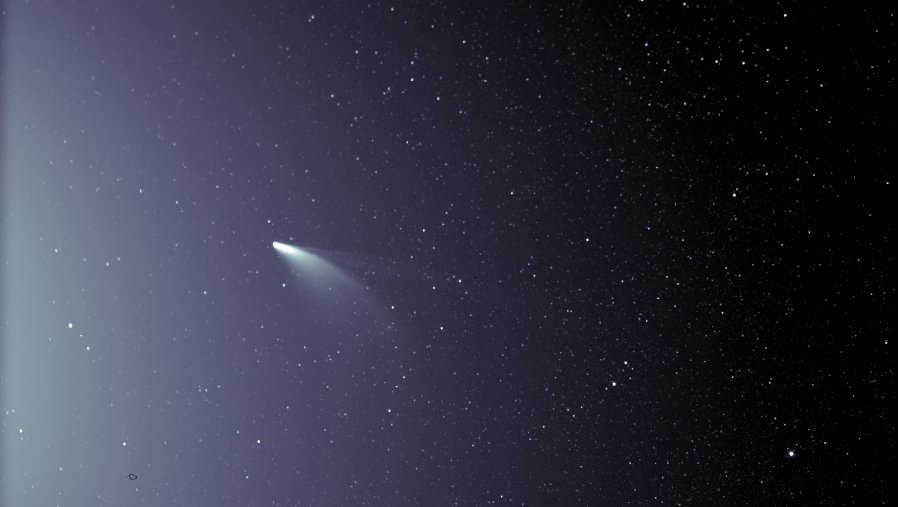Question Your World: How Can I See Comet NEOWISE?
There sure has been a lot of news on Earth, but don't forget there are things happening all around us in the cosmos, too. After making a really long trip, a comet is swinging by our neck of the woods giving astronomy-lovers a dazzling show in the evening and early-morning sky. A comet that people can see without the use of a telescope … that’s a great reason to keep looking up! So, how can I see comet NEOWISE?
The ongoings of the cosmos have meant a lot to people over time. Celestial occurrences like planetary alignments have led to some bad predictions about the end of the world! Knowledge of eclipses have been used to gain leverage on opponents. And there are comets.
In human history the sighting of comets has often been associated with a lot of doom and gloom like turbulent political tensions and uncontrollable diseases. That can’t possibly be the case these days though … right? Okay, while it’s not the end of the world, there is a cool comet worth discussing.

Image credit: NASA
Comet NEOWISE is named after the Near-Earth Object Wide-field Infrared Survey Explorer, the mission and spacecraft that discovered this comet in late March. There are 4,175 comets known to science, but potentially trillions more in our solar system, including extremely distant places like the Oort cloud. There have also been many comets that have passed by Earth and, depending on their orbital path and size, they may or may not be able to be seen with our own eyes. Lucky for us, Comet NEOWISE can be seen by the naked eye!
The comet recently swung past the sun and will fly by the Earth on its way back out to the more distant parts of our solar system. If you look to the north eastern sky a little before sunrise you may be able to spot this comet. It’s far away so it’ll be very small, appearing about the size of a star with a faint tail. Another option is to watch the northwest sky right after sunset. Its path will make it appear higher in the sky as it retreats further from the sun, but the lack of the sun’s warmth also makes comets harder to see and ultimately disappear from our skies.
Long exposure photos have helped show the more complete shape of the comet, including a second ion tail! The tails are a result of the sun whittling away at the comet – ices are vaporized and carry dust away from the comet nucleus. The resulting gas can be stripped of its electrons to form the ion tail; dust lofted by vaporized volitiles is blown back by radiation pressure – the force of sunlight – and forms the dust tail.
As it fades from our skies, NEOWISE will be returning once again to the cold and more distant parts of its orbit. This comet’s orbit is huge. How huge is it?! It’s so huge that it’ll be traveling for another 6,800 years before it returns to our neck of the woods. Check it out while you can or else you’ll just have to hear about it through tales.
The Museum is hard at work helping you to discover your world despite dramatically reduced financial resources. If you'd like to help us continue this work, click here to learn how.